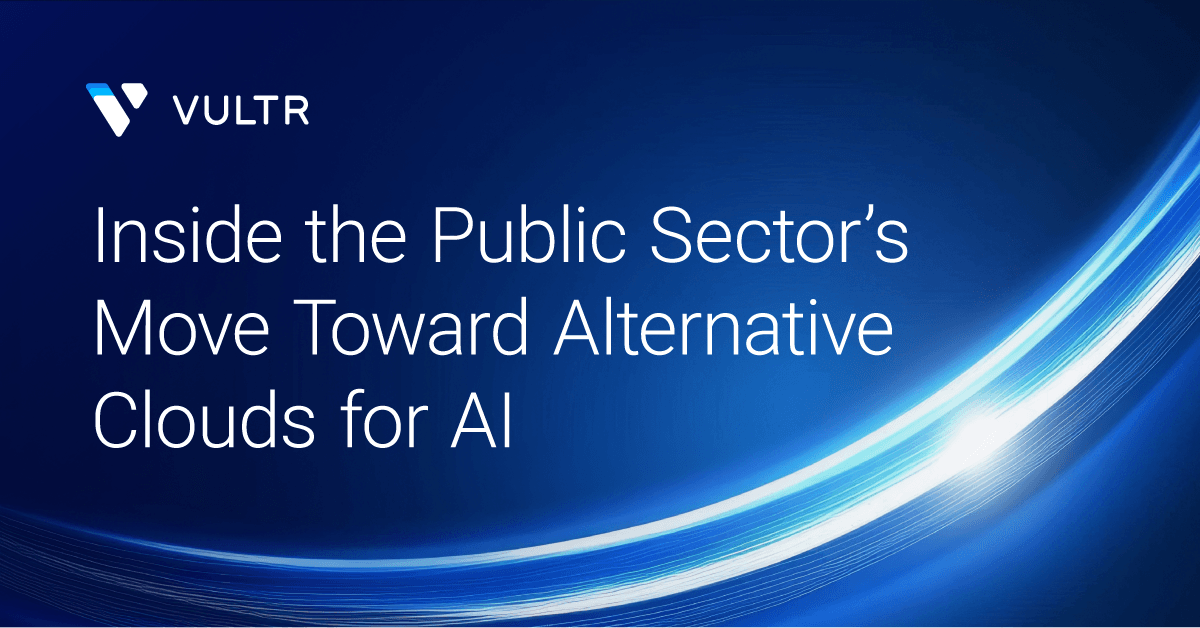Public sector AI adoption is advancing more rapidly and deliberately than public perception suggests. According to our new report, “Unlocking the Power of AI in the Public Sector,” based on survey data from S&P Global Market Intelligence, 74% of Public Sector organizations are in the "Accelerated" or “Transformational” stages of AI maturity, where AI use cases are deeply embedded in day-to-day operations.
Once seen as slow to modernize, agencies are now applying lessons from years of digital transformation to scale AI with greater discipline and control. The result is a pragmatic approach rooted in experience: modernize what works, secure what matters, and move at a pace that builds lasting value.
The survey also shows that 48% of public sector technology leaders now identify alternative providers as their preferred AI cloud platforms, compared to just 11% who favor hyperscalers. That’s the widest gap of any industry surveyed, signaling how infrastructure strategies are evolving to meet the public sector’s unique demands for security, compliance, and fiscal accountability.
Behind that shift lies something deeper than cost or capacity. Governments are re-evaluating trust – who they rely on to host citizen data, ensure compliance, and deliver transparency at scale. Having seen the pitfalls of vendor lock-in and opaque pricing, agencies are seeking partners who enable sovereignty and control, not dependency. This is the foundation for the next phase of modernization: steady, sovereign, and built on earned trust.
Beyond scale: The real drivers of change
Factors beyond cost and performance drive the move toward alternative clouds. For governments, priorities are governance, resilience, and control. Years of experience with complex IT modernization have taught agencies that innovation must protect both mission and mandate, and that scale alone no longer guarantees transparency or flexibility.
According to Gartner, government AI investment is projected to grow at a 19% compound annual growth rate through 2027. And per the S&P survey data, public sector organizations also allocate a larger share of their budgets to IT and cloud infrastructure than any other industry, with most planning steady increases rather than sharp spending spikes. These findings suggest a long-term commitment to modernization, grounded in governance, accountability, and sustained momentum, rather than short-term expansion.
Governments are translating those priorities into action. Many have learned from early cloud migrations that long-term contracts, unpredictable egress costs, and proprietary architectures can limit flexibility and scalability. In response, agencies are diversifying across providers and adopting sovereign, compliant environments that align infrastructure decisions with policy goals, rather than relying on vendor roadmaps.
This experience is driving demand for open, composable environments that support secure data pipelines, hybrid deployments, and distributed performance. Public sector leaders are prioritizing sustainability over speed, investing in AI-ready cloud models that they can govern with the same confidence as they operate them.
When sovereignty becomes strategy
The public sector’s growing preference for alternative clouds reflects a broader shift: Trust is becoming a measurable component of digital infrastructure. Sovereignty, transparency, and compliance are the foundations on which governments build AI strategies that can endure political change, public scrutiny, and rapid technological evolution.
In the benchmark survey, 86% of public sector respondents ranked financial stability as a top criterion when choosing a cloud provider, followed closely by 84% who prioritized security and compliance. These figures underscore how institutional trust and operational reliability shape procurement decisions as much as performance metrics. Governments are choosing providers that can deliver predictable governance and uptime.
By maintaining control over where data resides, how it’s processed, and which standards it meets, agencies gain confidence to innovate faster within secure, compliant frameworks. In this way, sovereignty becomes not a constraint on innovation but a catalyst for it, enabling governments to scale AI safely, locally, and sustainably.
A more distributed future for AI
The findings suggest a more distributed future for public sector AI, characterized by diversified infrastructure and shared accountability rather than centralized control. As agencies continue to modernize, they’re designing ecosystems where workloads can move seamlessly between on-premises systems, regional data centers, and independent cloud environments.
This model reflects the realities of public service: Critical systems must stay compliant and resilient, even as innovation accelerates. Alternative clouds are emerging as a key enabler of that balance, providing the performance and GPU access required for AI workloads while maintaining local jurisdiction over data and governance.
Ultimately, this approach redefines what modernization means for governments. It’s not a race to deploy the latest technology first. It’s a commitment to build AI infrastructure that citizens can trust, regulators can verify, and agencies can sustain over time.
Download the 2025 Public Sector AI Benchmark Report to explore how government leaders are reshaping modernization strategies and scaling AI on sovereign, secure foundations.

